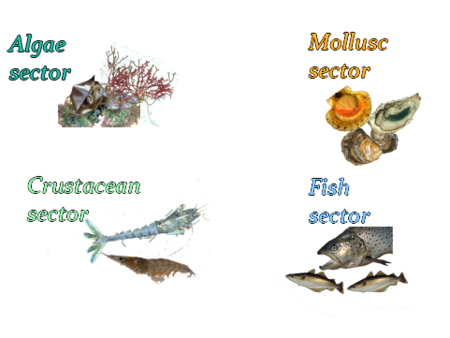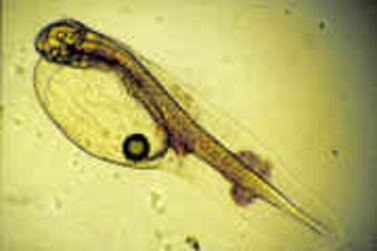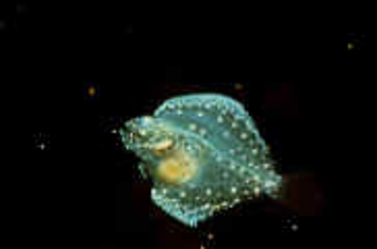Turbot
Name : | Turbot |
|---|---|
Scientific name : | Scophthalmus maximus - Pleuronectiform belonging to the Scophthalmidae family, found along the whole of the French coastline, sometimes confused with the brill ( Scophthalmus rhombus). |
Size : | rarely exceeds 100 cm and more than 25 kg (27 years). |
History : from the pioneers to present…
The turbot belongs to the few “pioneer” species of marine farming. Larvae rearing trials started in France in the seventies. The farming technique currently employed was developed – broadly speaking – between 1970 and 1980. In a very synthetic way, the development steps were as follows:
- The first ‘’captive’’ egg layings were obtained and the problems specifics to larvae rearing were identified (shifting to exogenous feed, metamorphosis, weaning).
- Optimization of artificial seasonal and non-seasonal breeding techniques.
- Improvement of the fresh water larva rearing using rotifers and small crustaceans (Artemia) enriched extemporaneously with various nutriments (namely essential fatty acids).
- Weaning problem solved owing to the development of a compound food suited to the species as of one month of age, and elimination of sand beds.
- Sufficient control of the artificial breeding and production of juveniles, that enabled the transfer into production hatcheries in 1981.
- Development of compound feed suited to prefattening (extruded feed).
- Acquisition of basic data on pond and cage fattening.
Recently, the research targets are mainly on genetic (growth increase), behavioural physiology (water quality) and nutrition (flesh quality).
Rearing techniques and production cycle
The turbot is a “gonochoric” species in which individuals are both male and female. Females, which grow better than males, reach their sexual maturity at the age of 3 and they can lay eggs spontaneously in captivity. By modifying the farming temperature and the duration of the day, it is possible to achieve offset egg-laying patterns throughout the year.
The turbot if a highly fertile species, each laying comprising hundreds of thousands of eggs (mean diameter 1 mm). At birth, the larva (size about 3 mm) seems very primitive and immature,
yet within a month it will reach the morphology and the organization level of the adult.
The first month of farming which corresponds to the feeding period using live preys is very delicate. Currently, in France, turbot fattening is performed inside shallow inland ponds only (north of Brittany, Atlantic Pyrenees). Depending on the temperature condition of the farm (frequent use of well water at 13°C to limit the thermal range), it takes at least two years to produce a fish weighing 1.5 kilo.
Turbot yields evolution
Farmed turbot production is very recent in Europe (40 tons in 1985), which grew rapidly mainly in Spain. For the last few years, the European production has remained stable at about 5,000 tons. For the last few years France has been occupying a modest position in commercial size turbot production (less than 1 000 tons), although it is the world leader for the production of juveniles exported to Europe and to China.
Product value enhancement
Farmed turbot is traditionally commercialized as fresh whole fish, weighing between 1.5 and 2 kg. Large fish can be filleted (sold in vacuum packs), and demand is increasing for “portion” turbot ranging between 500 and 750 g, with a lower commercial value. Part of the French production of turbot is exported live.
Turbot figures
7 633 | The European production of turbot in 2006 - French production represents about 10 % |
|---|---|
4,2 million | The French production of juveniles of turbot in 2004 |
3 000 | The production of turbot consumed in France Turbot is not well known in France, hence the low consumption. It is considered as a ‘’festive’’ fish not always clearly differentiated from the brill (in exports statistics for example), despite an obvious difference in quality of the meat. The French market is therefore open, with a consumption level of about 3,000 tons per year. The share of the farmed products equals twice that of fisheries and, unlike the bass, prices are regularly rising. Farmed turbot can play a role on the luxury fish market, which is open albeit ill-defined. The broodstock market on the contrary is more demanding and competition is fierce. |
Strengths / Weaknesses
Strengths | Weaknesses |
|---|---|
|
|



